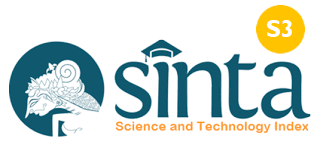Pendidikan Karakter Dalam Satua Anak Agung Di Mesir
DOI:
https://doi.org/10.37329/cetta.v3i2.453Keywords:
Character EducationAbstract
Over the past few years, the government has given a spesific attention to the character education due to its main purpose to develop good and right behaviour for the students since their early age. To achieve this, one of them is through education. In Bali, according to the concept of its society, education is translated by local values in a simple way, such as learning while travelling, learning while singing, learning while playing a game and so on. The Balinese folklore (Satua) is an implementation of Hindu values which give an understanding on conscience and behaviour to the children since early age. This research is a qualitative research using the hermeneutics method. Bali has many literary heritages which are full of the value of character education, one of them is Satua Bali. Among the many Satua that are available, Satua that will be used is Satua I Nengah Tinggen's with titled Anak Agung di Mesir. He is one of the Balinese literary maestros. The study of this folklore refers to six pillars of character proposed by SD Westwood, covers trustworthiness, respect, responsibility, caring, citizenship, and fairness. It can be concluded that Satua is somewhat effectively used as a character education media because it contains the values of character education needed for the nation's character development and can be taught early with Satua.
References
Candrika, L. Y. (2019). Tantangan Budaya Literasi Di Era Digitalisasi : Peranan Dongeng Lokal Dalam Memperkaya Literasi Nasional. Prosiding Seminar Nasional Dharma Acarya Ke 1, 181–190.
Danandjaja, James. 1984. Folklor Indonesia: Ilmu Gosip, Dongeng, dan Lain-Lain. Jakarta: PT Temprint.
Febriadiana, D., Puspawati, L. P., & Putra, I. B. R. (2018). Teks Satua Betara Watugunung Dalam Cerita Rakyat Daerah Bali: Analisis Struktur dan Fungsi. Humanis, Fakultas Ilmu Budaya Unud, 22(2), 342–353. https://doi.org/10.24843/jh.2018.v22.i02.p10
Griffith, R.T.H. (2005). Yajur Veda Samhitā (diterjemahkan oleh Dewantoro). Surabaya: Paramita.
KBBI. (2016). Kamus Besar Bahasa Indonesia (KBBI). [Online] Available at: http://kbbi.web.id/pusat
Marsono. (2019). Pendidikan Karakter Berbasis Nilai Budaya di Era Milenial. 51–58.
Parmajaya, I. P. G. (2018). Implementasi Konsep Tri Hita Karana Dalam Perspektif Kehidupan Global : Berpikir Global Berperilaku Lokal. PURWADITA, 2, 2.
Palmer Richard. E. (2003). Hemeneutika: Teori Baru Mengenai Interpretasi. Diterjemahkan Masnur Hery dan Damanhuri Muhammad. Yogyakarta: Pustaka Pelajar
Puji Lestari, Herman J. Waluyo, K. S. (2018). Prosiding Seminar Nasional Sastra Agama dan Pendidikan Bahasa Program Studi M agister Sastra Agama dan.
Ratna, Nyoman Kutha. 2004. Teori, Metode, Dan Teknik Penelitian Sastra (Dari Strukturalisme Hingga Postrukturalisme, Perspektif Wacana Naratif). Yogyakarta: Pustaka Pelajar.
Tinggen, I N. (1993). Satua-Satua Bali (II). Singaraja: Indra Jaya
Zubaedi. (2015). Desain Pendidikan Karakter: Konsepsi dan Aplikasinya dalam Lembaga Pendidikan. Jakarta: Kencana
Downloads
Published
How to Cite
Issue
Section
License
An author who publishes in the Cetta : Jurnal Ilmu Pendidikan agrees to the following terms:
- Author retains the copyright and grants the journal the right of first publication of the work simultaneously licensed under the Creative Commons Attribution-ShareAlike 4.0 License that allows others to share the work with an acknowledgement of the work's authorship and initial publication in this journal
- Author is able to enter into separate, additional contractual arrangements for the non-exclusive distribution of the journal's published version of the work (e.g., post it to an institutional repository or publish it in a book) with the acknowledgement of its initial publication in this journal.
- Author is permitted and encouraged to post his/her work online (e.g., in institutional repositories or on their website) prior to and during the submission process, as it can lead to productive exchanges, as well as earlier and greater citation of the published work (See The Effect of Open Access).
Read more about the Creative Commons Attribution-ShareAlike 4.0 Licence here: https://creativecommons.org/licenses/by-sa/4.0/.





